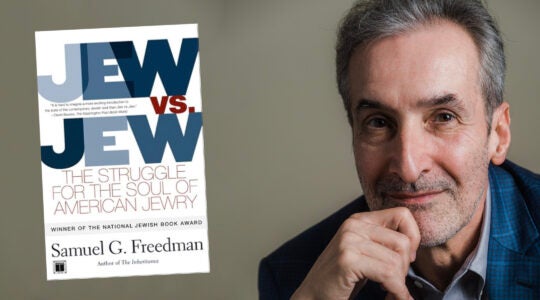Not long ago the receptionist in our office received a call from a reader with a complaint.
That in itself is not remarkable, alas, but this caller was upset that the phone number listed in an advertisement in our newspaper was out of order. It turns out, though, that the “ad” was from our Purim Spoof, promoting the virtues of spending Passover in the Antarctica as one of the benefits of global warming. It proclaimed: “experience the 11th plague: frostbite,” and noted that “all waiters are actual penguins.” Not surprisingly, the phone number for reservations we listed, 1-800-GOTKESS, was unresponsive.
I chalked this up to yet another example of the endless quest for new and exotic Passover experiences. In the beginning, it was Florida, and the lure of warm weather and abundant food that was served, not slaved over in one’s own kitchen. The marketable combination of wealth among observant families and wanderlust has grown, branching out now to include Passover travel packages for Arizona, California, Mexico, Europe, a variety of cruises and, of course, Israel.
Having spent Passovers at a Florida resort run by close friends, I can attest to the many benefits of such an experience, from the camaraderie that develops among the guests to spending the hours just before the holiday relaxing rather than making last-minute preparations in one’s kitchen.
I have also spent many happy Passovers at home, and concluded that the key to any memorable holiday is celebrating it with loved ones in a meaningful way. And it is no wonder that the Passover seder is observed by more American Jews than any other holiday or ritual in the Jewish calendar, because it has come to represent a powerful blend of family, food, freedom and faith.
Why is this night different? On other major holidays we sit in the synagogue for many hours, but the central experience of Passover is an intimate one, finding us sitting around the table together as evening descends, enjoying each other’s company and commanded to relax and relate in a way that fosters warmth.
The seder involves telling, sharing and re-interpreting a timeless story of liberation, a dramatic moment when God entered the human narrative and freed the Jews “with an outstretched hand,” according to the Torah, transforming us from a people into a nation.
Every family has its unique ways of relating the story and marking the rituals, and in the process creating a set of memories that the children will always remember. (I used to joke that decades from now, youngsters whose grandparents spent seders at Passover resorts will run outside to place a book on a chair very early on holiday mornings. When asked why, they will respond, “because that’s what my Bubbe and Zaidy did in the olden days,” not realizing the custom began as a means of saving lounge chairs around the hotel pool.)
The narrative of the Haggadah is both timeless and contemporary, speaking to us about the eternal quest for freedom and human dignity, incorporating a message of universal inclusion — “let those who are hungry come and eat” — as well as the particularlist message that we are a “chosen people,” though chosen to be a “light unto the nations” is a burden as much as a reward, an obligation we too often fail to fulfill.
Those Haggadah themes of outreach to all and protection of our own are with us today, as debate swirls over whether we should devote ourselves to tikkun olam, repairing the wider world, or strengthening our own weakened community.
Surely the answer is both, and the Haggadah is telling us these goals are not mutually exclusive. But despite our small and decreasing numbers, we Jews are a people more than ever divided. Echoing the Four Sons of the seder, we include at least four camps: the grass-roots, amcha activists centered around Israel and its protection, who also tend to be the core of American Jewish organizations, synagogues and religious traditions; the younger, more liberal set who want to engage rather than distrust the rest of the world, and seek its repair through commitment to causes like the environment, social justice, Darfur and Tibet; the smallest segment, who reject Jewish life as too parochial and see Israel as an embarrassment, at best; and the largest group, and growing, of American Jews who are simply opting out of the enterprise through assimilation, often in a passive way.
All the more reason for us to emphasize the unique quality of the seder as not only a time for immediate and extended family, and friends, to come together and renew connections, but for each of us to recognize that for all our differences, we still share one Torah, encompassing a variety of ways of expressing the essence of the Passover story.
The richness of Judaism is that it can accommodate, even encourage, different and often competing interpretations of its story — our story. As the rabbis of the Talmud taught us centuries ago, the point is to engage, not necessarily agree.
So as we gather this weekend for the time-honored tradition of the Festival of Freedom and open the door for the Prophet Elijah, let us welcome his message of redemption, and pledge to keep our hearts and minds open as well — to ancient traditions and new voices, and to each other.
Chag sameach, happy Passover.
The New York Jewish Week brings you the stories behind the headlines, keeping you connected to Jewish life in New York. Help sustain the reporting you trust by donating today.





